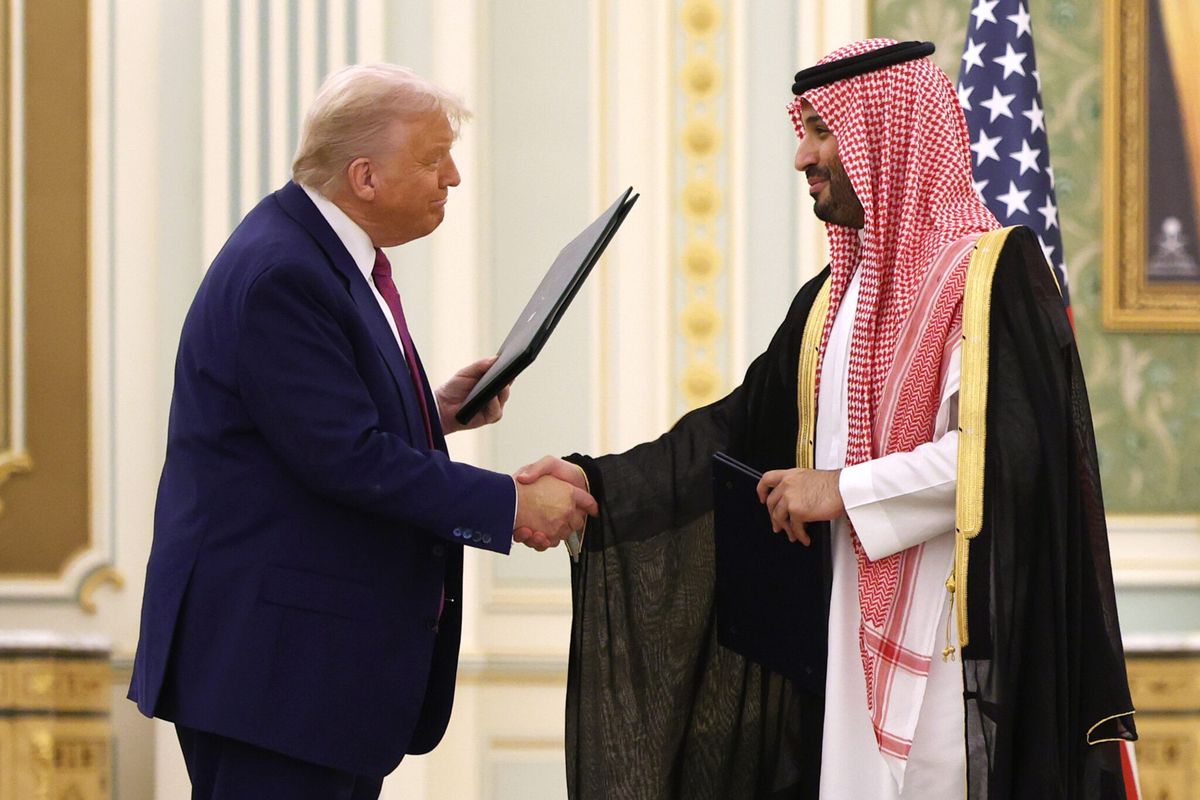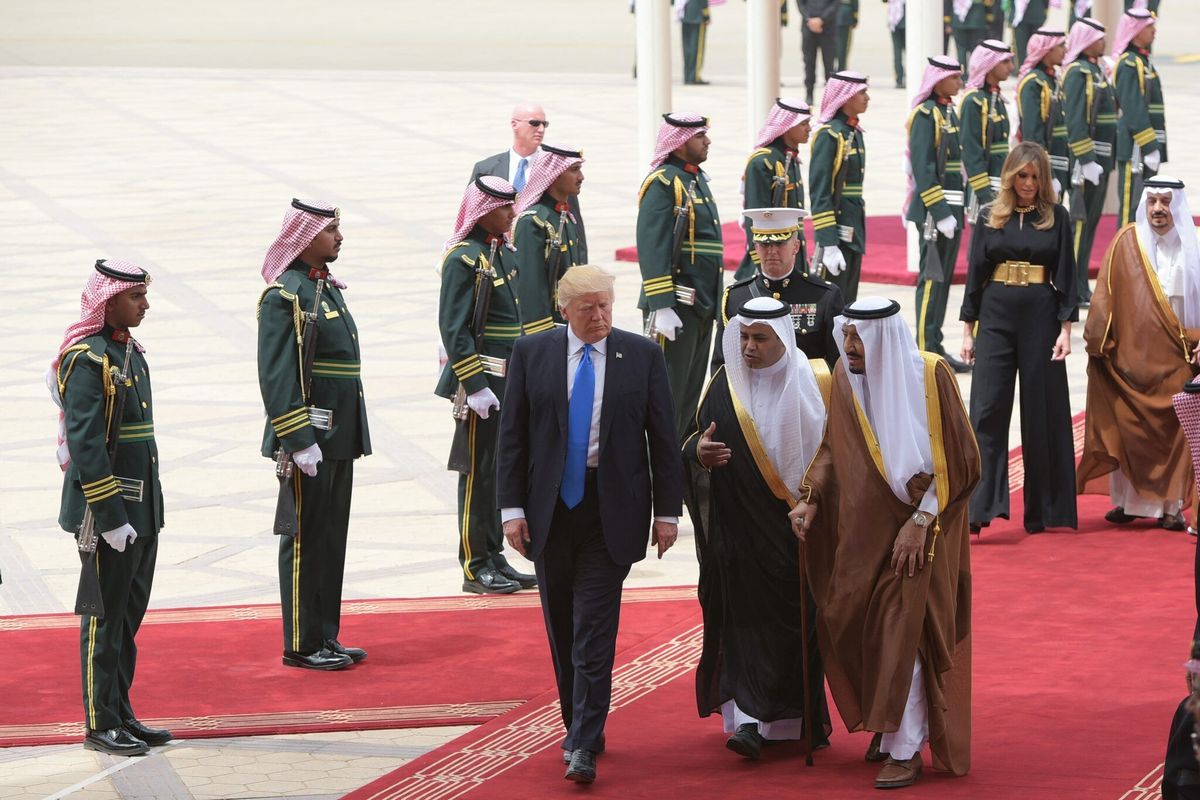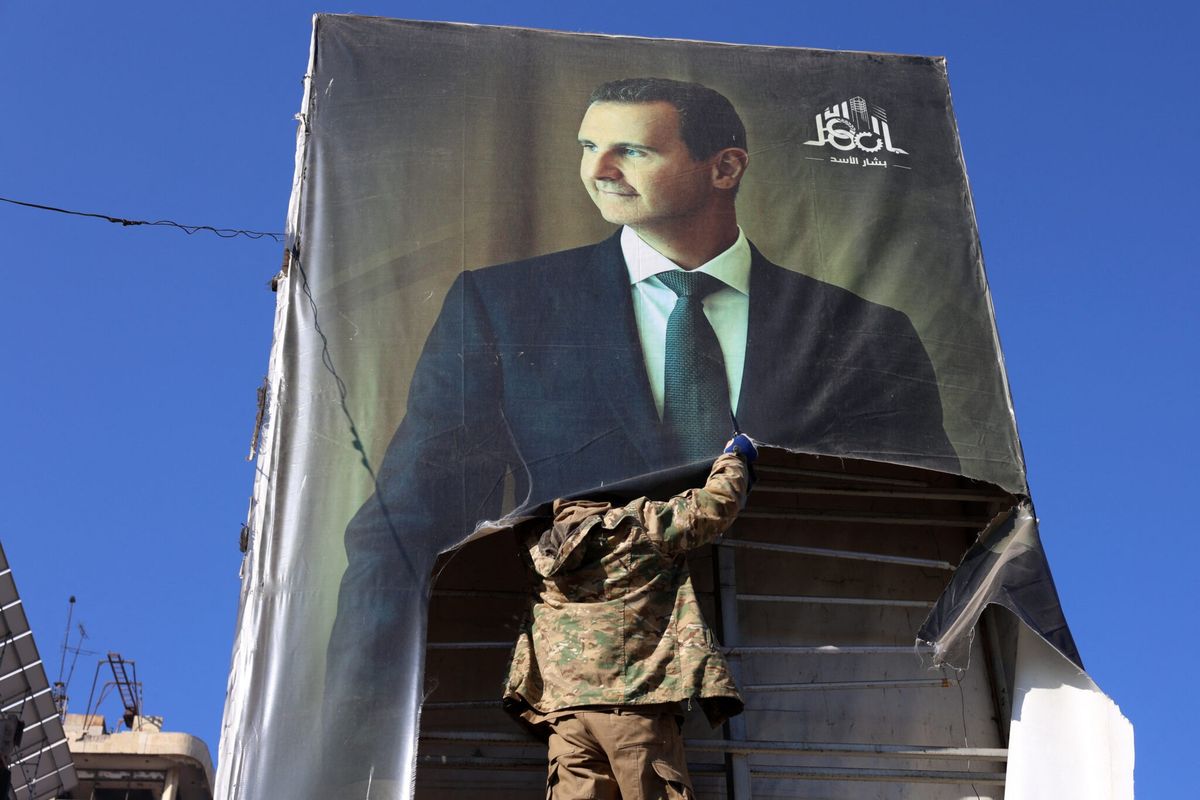SUBSCRIBER+ EXCLUSIVE REPORTING — An old Iran problem has landed back on the front burner, thanks to a report this week that says the Iranian nuclear program is closer than ever to producing a weapon.
In the nearly eight months since the October 7 Hamas massacre in Southern Israel, Iran has featured regularly in the global security conversation because of its support for Hamas, Hezbollah, the Houthis and other regional proxies, and the growing dangers of a wider regional war. Now a sobering assessment has renewed concerns about the country’s nuclear ambitions.
According to a confidential report from the International Atomic Energy Agency (IAEA), obtained this week by the Associated Press, Iran has steadily increased its stockpile of near-weapons-grade uranium, while implementing only a fraction of the conciliatory steps it had pledged to take last year. Recent talks with the IAEA have gone nowhere, and the time it would take for Iran to produce weapons-grade uranium has shrunk.
The revelations have revived old concerns, in a particularly fraught moment for the region.
“If Iran obtains a nuclear deterrent, the Tehran-created Middle East security issues we observe today will look like child's play,” Andrea Stricker, Deputy Director for the Nonproliferation and Biodefense Program at the Foundation for Defense of Democracies, told The Cipher Brief. “Nuclear-armed states naturally restrict pushback by other states, since the latter fear escalation to a nuclear exchange. Iran would be able to exponentially increase its regional destabilization and threaten Israel with annihilation.”
From nuclear deal to “breakout” moment
Successive governments in the U.S. and Israel have vowed that Iran must never be permitted to become a nuclear state, but there have been sharp divisions over how to slow or stop its enrichment program.
The Obama Administration and several European nations negotiated the landmark 2015 nuclear agreement with Iran. Under the terms of that deal, Iran agreed to limit its uranium enrichment to 3.67 percent purity – well below the 90 percent needed for weapons-grade uranium – and to allow IAEA inspections of its facilities in exchange for sanctions relief. In 2018, the Trump Administration pulled out of the deal, and a year later Iran began violating its terms.
The Biden Administration pressed from its early days for a return to the deal, but negotiations stalled. And while the U.S. and Iran negotiated a rare prisoner swap last September, any diplomatic momentum from that breakthrough was shattered on October 7, when Hamas, which has been generously supported by Iran for years, launched its assault against Israel.
Iran’s shrinking “breakout time”
Today, Iran is believed to have more than 27 times more enriched uranium than was permitted under the 2015 deal. The latest IAEA report found that as of May 11, Iran had 142.1 kilograms (313.2 pounds) of uranium enriched to 60 percent – an increase of 20.6 kilograms since the last IAEA report just three months before.
Uranium enriched at the 60 percent level is only a small technical step away from being enriched to the weapons-grade level of 90 percent. At that level, the IAEA says that roughly 42 kilograms of uranium is required to create one atomic weapon.
David Albright, President of the Institute for Science and National Security, wrote on X Tuesday that "In (the) first month after breakout, Iran could produce enough WGU (weapons-grade uranium) for almost 8 nuclear weapons, enough for 10 by end of second month, enough for 12 by end of the third month, and enough for 13 by end of the fourth month."
This week’s report also noted that Iran has not reconsidered its September 2023 decision to bar the IAEA’s inspectors, though the IAEA said it expects Tehran “to do so in the context of the ongoing consultations between the agency and Iran.” The IAEA chief Rafael Grossi said that a reversal of the prohibition on inspectors “remains essential to fully allow the agency to conduct its verification activities in Iran effectively.”
Stricker, who has referred to “Tehran’s dropping breakout time” as a fundamental concern, said that the IAEA's latest report “shows a program with a growing breakout capability, diminished IAEA monitoring, and unresolved nuclear weapons dimensions that is poised to surge ahead.”
For its part, Iran maintains it has fulfilled its legal commitments and “done its utmost” to enable the IAEA to “effectively carry out verification activities.”
The Gaza war – and a nightmare scenario
Anxiety over Iran’s nuclear program has spiked since Hamas’ deadly assault against Israel and the war in Gaza that followed.
In March, Gen. Michael Kurilla, the head of U.S. Central Command, warned the Senate Armed Services Committee that if Iran became a nuclear power, it would “change the Middle East forever.”
“Imagine if Iran possessed nuclear weapons on October 7?” Matthew Kroenig, Vice President and Senior Director of the Scowcroft Center for Strategy and Security at the Atlantic Council, told The Cipher Brief. “It could threaten Israel not to act in Gaza, and threaten America not to respond against the Houthis or militias in Iraq and Syria or elsewhere. We would be in a Cuban Missile Crisis situation.”
Ambassador Joseph DeTrani, a Cipher Brief expert, former CIA director of East Asia Operations and Director of the National Counter Proliferation Center, said that beyond the threat to Israel, Iran’s nuclear ambitions are also a catalyst for regional proliferation.
“A nuclear Iran will appreciably change the geopolitical dynamics in the Middle East,” DeTrani said. “Other countries, like Saudi Arabia, Egypt and Turkey will also pursue their own nuclear weapons program - or, at least in the interim, buy any nuclear weapons available on the open market. The prospect for conflict will increase appreciably, with the potential use of nuclear weapons.”
Grossi, the IAEA chief, sounded a similar note. “Unfortunately, what we see is a trend, a growing attraction, the lure of nuclear weapons is there,” Grossi told The Economist. “We cannot deny it.”
What comes next
After the May 19 helicopter crash that took the lives of Iranian President Ebrahim Raisi and Foreign Minister Hossein Amirabdollahian, Iran temporarily broke off communication with the IAEA. But now the channels are open again, and experts say the deaths are unlikely to impact Iran’s next moves.
“(Iran’s Supreme Leader) Ayatollah Ali Khamenei is in charge of Iran's nuclear program,” DeTrani told The Cipher Brief. “He makes the decisions. The death of President Raisi should have no impact on the Ayatollah's decisions in regard to Iran's nuclear program.”
Stricker agreed, adding that as Ayatollah Khamenei ages (he is 85), “he will have an increasingly urgent choice between moving for a nuclear deterrent or continuing the slower approach of readying the regime for a future breakout.”
Other players will face their own choices.
The IAEA Board of Governors is scheduled to meet next week, with the Iranian nuclear program at the top of its agenda. France and Britain are pushing for a new resolution to censure Iran, but The Wall Street Journal reported that the Biden administration is urging its European allies to refrain from rebuking Iran, in favor of a diplomatic approach. While the U.S. has aggressively called out Iran for support of terrorism and the various proxy militias in the Middle East, the White House may feel that a hard line now could lead to war. The White House denied the report.
The debate over censure reflects a broader disagreement about Iran policy. Earlier this year, former Trump Administration Vice President Mike Pence and Secretary of State Mike Pompeo argued for bombing Iran’s nuclear facilities; others have favored increased sanctions, and others still prefer the diplomatic path.
Jason Brodsky, Policy Director at United Against Nuclear Iran and Non-Resident Scholar at the Middle East Institute, told The Cipher Brief that stopping Iran from taking that “breakout” step to a nuclear weapon “requires multilateral sanctions, diplomatic isolation, and the development of a credible military threat.”
Stricker said that if and when Iran does “surge ahead,” moving past the enrichment threshold, “there will be few options apart from military action to stop Tehran from producing nuclear weapons....The West still has time to act and prevent a nuclear-armed Iran, but its options are narrowing.”
Read more expert-driven national security insights, perspective and analysis in The Cipher Brief.













